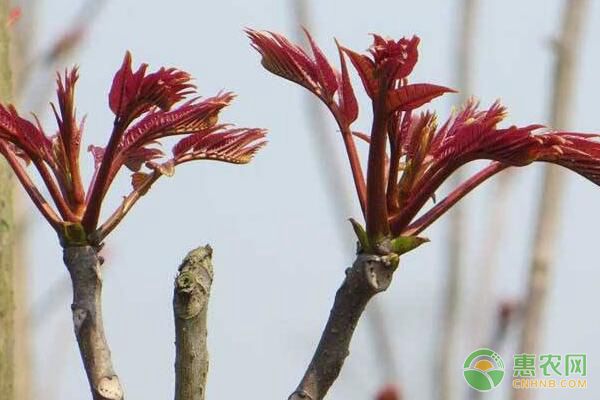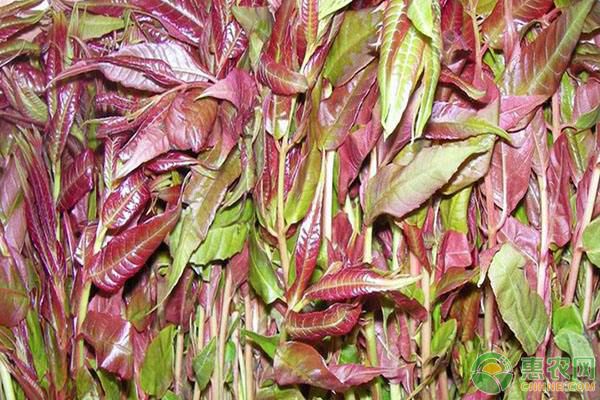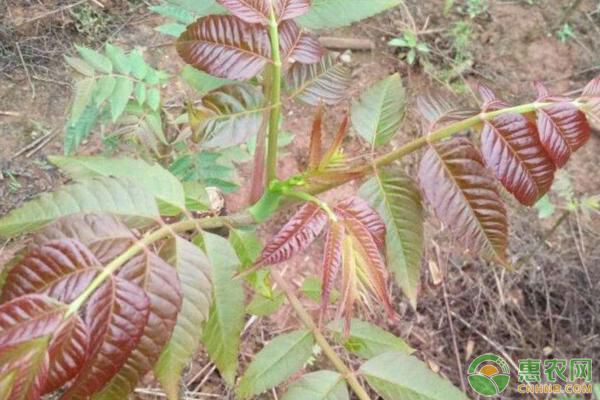Red oil carp is a traditional fine tree species in Gujiatun Village, Taihang Mountain, Hebei Province. The red germination is early in the spring, early in the market, bright in color, and rich in flavor. Therefore, it is popular among consumers, but due to the traditional open field planting method, red There is a small profit and a short supply period, which is difficult to meet the strong demand for people. Therefore, by exploring a series of measures such as greenhouse cultivation, the needs of consumers are greatly satisfied, as follows.

1 Construction of a solar greenhouse on the slopes of Taihang Mountain
According to the climate and geomorphological characteristics of Taihang Mountain, the sloping energy-saving solar greenhouse suitable for the characteristics of Taihang Mountain Ecological Zone was explored. Choose a plot of deep soil, water and fertilizer, fertile and loose, and then rely on soil and a total of six greenhouses with different spans and different orientations (see Table 1).
Table 1 Winter insulation effect of six different structural greenhouses in Taihang Mountain area

The No. 1 greenhouse is 10 m wide and the ridge height is 4.5 m. The steel frame is welded by DN25 galvanized steel pipe, 12 mm galvanized steel bar + 15 mm (4 pipe) galvanized steel pipe with a spacing of 1 m and a middle 6 rows of 15 mm plating. The zinc steel pipe is connected, the back slope is supported by the cement column (120 mm×60 mm), and the wall (10 m×4.3 m×1 m) is the aerated block wall covering the quilt 2.25 kg/m2, using the 5-axis roll. The curtain machine uncovers the film, and the film is made of EVA film. It has been observed that the extreme indoor temperature in winter is 6 °C, which is not suitable for the production of greenhouse citron. The greenhouses from 2 to 6 are 7 m wide and 3.5 m high. The steel frame is welded by 20 mm (6 in.) galvanized steel pipes and 12 mm galvanized steel bars + 15 mm galvanized steel pipes with a spacing of 1 m and 5 rows in the middle. 15 mm galvanized steel pipe connection, the back slope is supported by cement column (120 mm×60 mm), the wall (7 m×3.3 m×1 m) is aerated block wall, and the curtain for insulation Material (1.5 m×10) m × 0.07 m), the film is made of EVA film. The extreme low temperature in the winter greenhouse is 9 °C, which is more suitable for wintering production of citron.

2 seedlings and false plant dormancy
2.1 Seedlings
The standard size of the seedlings of red oil is 0.6-1.0 m high, and the base of the stem is more than 1 cm thick. It is required that the roots are fully developed and free of pests and diseases. Before the arrival of the first frost, the leaves of the camphor seedlings will be shaken from the nursery in October. Soil, lateral roots retained at least 30 cm, increasing its survival rate.
2.2 Implantation sleep
The pseudo-planting is east-west, 1 m wide and 0.5 m deep. The length depends on the number of seedlings. The camphor seedlings are placed obliquely in the ditch in the east, and the soil is buried while the seedlings are buried. Generally, after 10 to 20 days of natural low temperature, the leaves are completely detached and the dormant is basically completed. At this time, the greenhouse can be implanted at a high density.
3 Land preparation
In the greenhouse, 2 000 kg of farmyard manure and 30 kg of ternary compound fertilizer (17-17-17, the same below) are applied per mu of land; after the plot is leveled, the crucible is made from north to south, and the width is 1.0 to 1.5 m. Cm, 埂 width 30 cm.
4 transplanting greenhouse
The planting time of the seedlings in the greenhouse is in the middle and late November, when the transplanting planting density is 150-200 plants/m2 for one-year seedlings and 100-150 plants/m2 for 2-year seedlings. The specific operation is: digging into a ditch of 30-50 cm wide and 20 cm deep in the north-south direction in the greenhouse, and planting the seedlings in the order of the south dwarf north height, one plant of the scorpion, the side seedlings, and the burying The soil is 20 cm thick to prevent the seedlings from falling. After each application of urea 2.5 kg, the water is poured once, until the water is exhausted, and then cover the soil 15-20 cm, buried 5 to 10 cm above the root, and then water once. Planting plant spacing (22 ~ 24) cm × (4 ~ 5) cm, 60,000 to 80,000 seedlings per mu. After the planting, the film was kept warm, and when the temperature was at 15 degrees, it was ventilated for 2 hours.

5 Management measures and harvesting
5.1 Temperature
The buds generally start to germinate at 8 to 10 °C, stretch at 10 to 12 °C, and twitch long leaves when the temperature is stable above 14 °C. According to the time requirement for the Spring Festival of the Champs Spring Festival, the daytime temperature in the greenhouse is maintained at 15-22 °C, and the nighttime temperature is maintained at about 10 °C. After about 40-50 days, the top buds can germinate; after germination, the temperature is maintained at 20-25 °C during the day, keeping at night. At 10 °C or above, the camphor begins to germinate after about 15 days, and the temperature during the daytime is maintained above 20 °C after germination.
5.2 Humidity
Indoor humidity can be controlled by measures such as watering and venting. After planting the water after the planting, keep the soil moist, but not too moist, otherwise it is easy to root. It is recommended that the indoor relative humidity be maintained at 70% to 85%.
5.3 Lighting
The illuminance in the greenhouse during the growth of the camphor is preferably 20,000 to 30,000 lx. When there is fog condensation, you can remove the water droplets on the membrane in time to enhance the light. When the outdoor temperature is relatively low and the indoor temperature is not selected, it is not necessary to remove the grass during the day to ensure a higher temperature in the room and promote the growth of the camphor bud.
5.4 Water and fertilizer management
During the pseudo-planting period, the camphor should be properly topdressed. After the shed, combine the first watering, and apply 15 kg of urea, 35 kg of diammonium phosphate and 35 kg of potassium sulfate per acre; 2 to 3 days before harvesting of each shoot. The leaves were sprayed with 0.3% urea and potassium dihydrogen phosphate; water was poured every 10 days.
5.5 Harvesting
The top bud can be harvested about 10 days after germination, and the second ridge can be harvested after about 25-30 days. Picking time is appropriate before sunrise.
Material
Changzhou Ziying Metal Products Co., Ltd , https://www.ziyingmetal.com